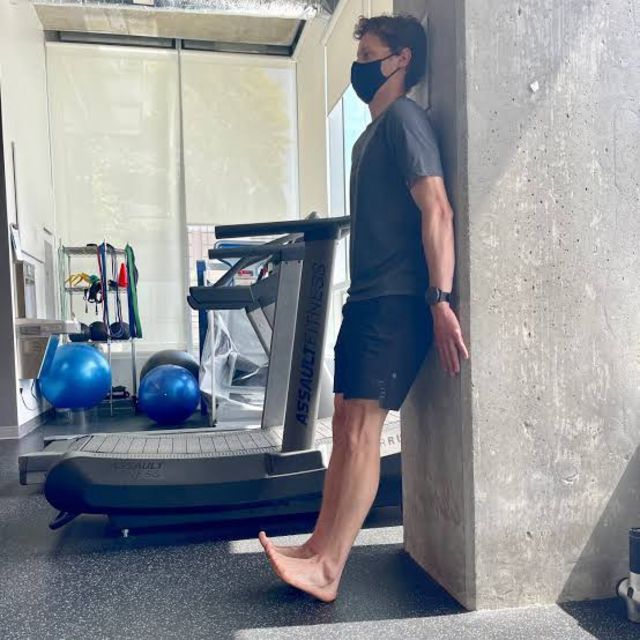The wall tibialis raise is a powerful exercise that targets the tibialis anterior muscle, located at the front of the lower leg. This often-overlooked muscle plays a vital role in foot and ankle stability, making it essential for athletes and active individuals alike. By incorporating wall tibialis raises into your workout routine, you can improve your overall lower body strength, enhance athletic performance, and reduce the risk of injuries.
Many people focus on traditional leg exercises like squats and lunges, neglecting the tibialis anterior, which can lead to strength imbalances and potential issues like shin splints. Understanding how to perform the wall tibialis raise correctly can elevate your fitness game and contribute to a more balanced physique. This article will guide you through the ins and outs of the wall tibialis raise, from its proper execution to its numerous benefits.
Whether you're a seasoned athlete or a fitness beginner, this exercise is accessible and can be easily incorporated into any routine. Let's dive into the specifics of the wall tibialis raise and explore how it can help you achieve stronger, healthier shins.
What Is the Wall Tibialis Raise?
The wall tibialis raise is an effective exercise that isolates the tibialis anterior muscle. To perform this exercise, you'll need a wall for support. The movement involves lifting your toes toward your shins while keeping your heels on the ground. This simple yet effective exercise can be done anywhere, making it an excellent addition to your workout regimen.
How to Perform the Wall Tibialis Raise?
Executing the wall tibialis raise is straightforward. Follow these steps for proper form:
- Stand facing a wall, about a foot away from it.
- Place your hands on the wall for support.
- Keep your heels on the ground while lifting your toes toward your shins.
- Hold the top position for a second before lowering your toes back down.
- Perform 10-15 repetitions for 2-3 sets.
Why Is the Wall Tibialis Raise Important?
Incorporating the wall tibialis raise into your fitness routine has several benefits:
- Strengthens the Tibialis Anterior: This exercise directly targets the muscle, enhancing its strength and endurance.
- Improves Ankle Stability: Stronger tibialis anterior muscles contribute to better ankle stability, which is crucial for various activities.
- Reduces Injury Risk: Strengthening the tibialis anterior can help prevent common injuries like shin splints and ankle sprains.
- Aids in Athletic Performance: Enhanced strength in the front of the lower leg can improve running, jumping, and other athletic movements.
Who Can Benefit from the Wall Tibialis Raise?
The wall tibialis raise is beneficial for a wide array of individuals:
- Athletes looking to enhance their performance.
- Fitness enthusiasts aiming for a balanced workout.
- Individuals recovering from lower leg injuries.
- Anyone looking to improve lower leg strength for daily activities.
When Should You Include Wall Tibialis Raises in Your Workout?
Wall tibialis raises can be included in your routine at various points:
- As part of your warm-up to activate the tibialis anterior muscle.
- During strength training sessions targeting the legs.
- As a rehabilitation exercise if recovering from an injury.
Are There Variations of the Wall Tibialis Raise?
Yes, there are several variations you can try to keep your workouts interesting:
- Seated Wall Tibialis Raise: Perform the exercise while seated to reduce impact on the lower back.
- Weighted Wall Tibialis Raise: Hold a light weight for added resistance.
- Single-leg Wall Tibialis Raise: Perform the exercise on one leg to increase difficulty and engage stabilizing muscles.
What Are Common Mistakes to Avoid?
When performing wall tibialis raises, be mindful of these common mistakes:
- Not using a wall for support, leading to improper form.
- Raising the heels off the ground, which reduces the effectiveness of the exercise.
- Not maintaining a controlled movement, which can lead to injury.
How Often Should You Practice Wall Tibialis Raises?
For optimal results, consider practicing wall tibialis raises 2-3 times a week. As your strength improves, gradually increase the number of repetitions or sets to continue challenging the muscle.
Conclusion: Elevate Your Leg Workout with Wall Tibialis Raises
Integrating wall tibialis raises into your fitness regimen can significantly improve your tibialis anterior strength, ankle stability, and overall athletic performance. Whether you're an athlete, a fitness enthusiast, or someone recovering from an injury, this simple exercise offers numerous benefits. Remember to focus on proper form, gradually increase intensity, and enjoy the journey to stronger, healthier shins.
You Might Also Like
Exploring The Musical Journey Of Bruce Hornsby In SeattleMastering The Art Of Mom Commander Decks
Unlocking The Potential Of Your Garden With Grow Box Accessories
Discovering The Wonders Of Odessa Gorge: A Hidden Gem In Nature
Exploring The Universe Of Spacema: A Journey Beyond Our Planet
Article Recommendations
- Dd15 Engine
- Tattoo Designs Wife Name
- Strawberry Desserts No Bake
- Fantastic Another Word
- Does Matcha Help Lose Weight
- Megyn Kelly Before And After Weight Loss
- Jojo Siwa Real Name
- Tooth Lady China Concubine
- John Travolta Net Worth
- Living Room Red Couch Ideas


